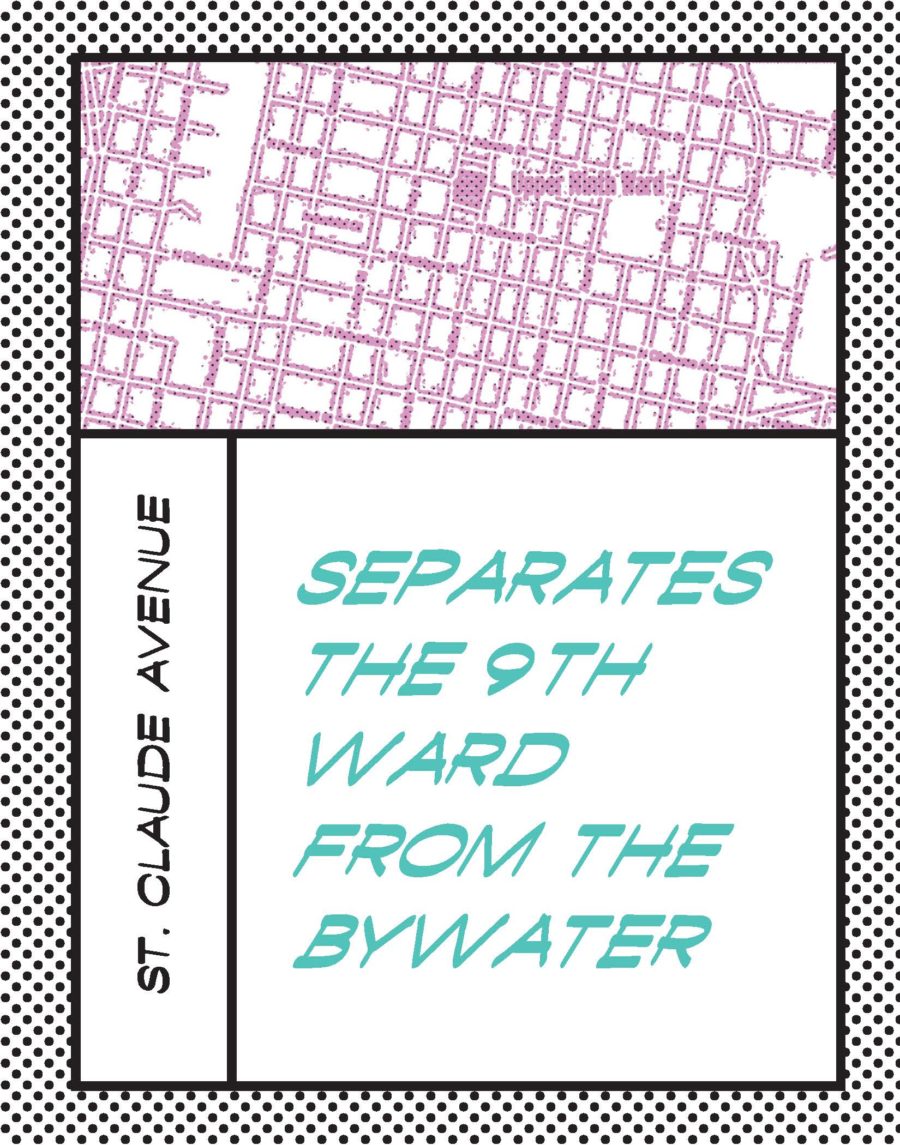Editor’s Note: ViaNolaVie, Krewe Magazine, and Bard Early College New Orleans partnered together in an effort to bring voices of the youth into the journalistic realm. Under the guidance of professors Kelley Crawford (Bard Early College) and Michael Luke (Tulane University), a composition course was manifested where students wrote non-fiction, New Orleans-based pieces, resulting in a printed publication (Krewe magazine) designed and published by Southern Letterpress. We will be publishing each student’s piece that was chosen for the magazine.

Daute’ Martin, graduate of Bard Early College and New Orleanian (photo from: Daute’ Martin’s Facebook)
The city of New Orleans is celebrating 300 years, and it is a city that has quite a history. It has overcome dozens of hurricanes, won the Superbowl in 2010, and for the first time in this city’s history, the people elected a female mayor in 2017–LaToya Cantrell. New Orleans is one of the United States’s most toured cities; however, what many people that come to this city never see is the real culture and the everyday lives of those whose families have lived here for generations.
When tourist come here they take pictures, eat good food, and party on Bourbon. When the party is over, they go home and talk about how the people of this city are very nice and welcoming. What tourist don’t know or do not acknowledge on their trip here is how the exact people that they met are being pushed out of their homes.
New Orleans natives are being pushed out of their homes and forced to leave the city that their parents, grandparents, other relatives, and themselves have worked so hard for. So many natives have put their blood, sweat, tears, and love into this city and have nothing to show for it. Take for instance the beloved French Quarter, which tours explain as having “French” or “Spanish” architecture. In fact, that is Senegalese and Haitian architecture and coloring because those buildings were built by slaves who were forced to make New Orleans their home. The family lines of those slaves are now once again being uprooted and moved. Why? Because gentrification is real in communities of color.
Here in New Orleans, St. Claude Ave. separates the 9th ward from Bywater. In the 9th ward, there are black people, projects, corner stores, and more importantly police officers. The exact opposite is true in Bywater, which has coffee shops, condos, art lofts, and a lot of white people.

Image by Julia Berghammer
As I spoke to natives from the city, many expressed their disgust at how people like them are being pushed out of their own communities. Marilyn Morgan, a 40-year-old native to New Orleans (9th ward) says, “Years ago there was never a Bywater area and the 9th ward. It was only the 9th ward, and I just think it’s crazy that when you go at least 6 blocks down the street you are in a whole new world.” Just like Marilyn Morgan, many other natives express the same thing.
Blake Woods, a 17 year old senior at KIPP Renaissance High School, went on a walk with a friend. While they were on that walk they found themselves deep in the Bywater community. Woods says, “As we walked, we noticed how different the community was. Over in the Bywater, the area it was much nicer. There were no police officers riding around, and I rarely seen black people.”
While Blake and his friend just so happen to take a walk around the neighborhood that reality is not for everyone here in New Orleans.
Shortly after Katrina, many people from the city of the New Orleans were displaced everywhere. It was the first time in America’s history that American citizens were refugees in their own country. To make matters even worse, many people didn’t return home due to corruption and fear. As Morgan says, “During the time of Katrina I had four children. When the storm was all over, I moved to Dallas, Texas. Me and my children stayed there for about two going on three years, and, believe it or not, we were gonna stay there longer,” she says. “We didn’t stay in Dallas after 2008 because the city sent me email saying that I either had to do something with my house or they were going to take it. It was so hard deciding what to do. My reality was that I had lost everything in Katrina and somehow the city of New Orleans wants me to fix my house. I couldn’t even imagine how many other people got the exact same letter and refused to come back home.”
But she did come back home, and when she did she remembers, “…returning home for the first time and I seen the French Quarter area, CBD, and Canal St. looking good while the people in majority black areas suffered.” During and after Katrina, many people thought about the violence and crime that existed in New Orleans. Some even thought that the city could use a clean slate. However, this “clean slate” leads to gentrification in communities of color.
So while the city of New Orleans celebrate 300 years and hundreds of thousands of tourist come to New Orleans, let’s remember that the heritage and history they are admiring is being blatantly moved out of New Orleans to make room for more coffee shops and tour busses. When the tourists take their beautiful bus ride to see the city and how far it has come since Katrina take them to St.Claude St. Let them see how the city that they have come to see has robbed the true culture of New Orleans. The natives of New Orleans are not only refugees in their own country but also in their own home.
Daut’e Martin is a Bard Early College student and senior at Cohen College Prep High School. She is also the winner of the 2018 POSSE Scholarship, and will be attending University of Notre Dame in the fall
 NOLAbeings Multimedia artist Claire Bangser created NOLAbeings as a portrait-based story project that marries...
NOLAbeings Multimedia artist Claire Bangser created NOLAbeings as a portrait-based story project that marries...  Voodoo in New Orleans: Reviving history: New Orleans fortune telling This article takes a deep dive into the history of Voodoo in New Orleans, its hybridization with Catholicism, and its present-day place in the city's culture. The author visits fortune-tellers in the French Quarter, using their guidance as a tool for introspection rather than a deterministic predictor of the future. Through her experiences in New Orleans, the author feels a mystical connection to both the past and the future.
Voodoo in New Orleans: Reviving history: New Orleans fortune telling This article takes a deep dive into the history of Voodoo in New Orleans, its hybridization with Catholicism, and its present-day place in the city's culture. The author visits fortune-tellers in the French Quarter, using their guidance as a tool for introspection rather than a deterministic predictor of the future. Through her experiences in New Orleans, the author feels a mystical connection to both the past and the future. 